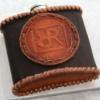Sign in to follow this
Followers
0

Decreasing Dye Transfer
By
bex DK, in Dyes, Antiques, Stains, Glues, Waxes, Finishes and Conditioners.

By
bex DK, in Dyes, Antiques, Stains, Glues, Waxes, Finishes and Conditioners.